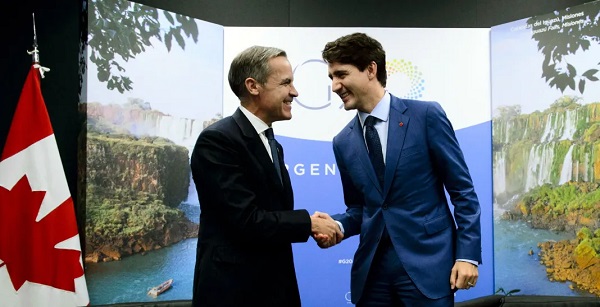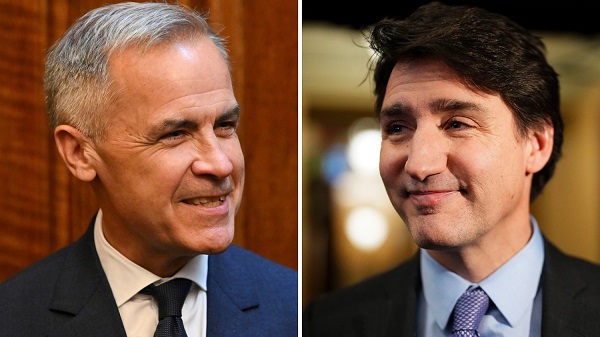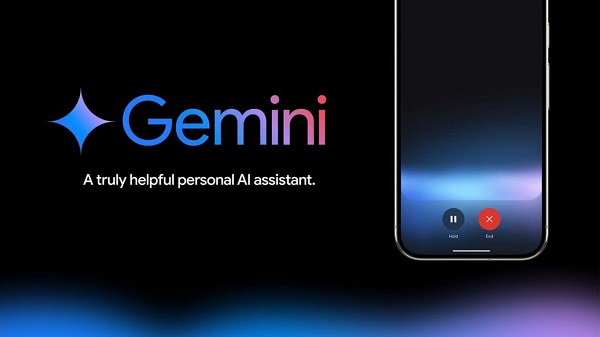Business
Immersive technologies are the future, so how do they benefit industry?

These are exciting times. For those who may be unaware of the advancement of this incredible immersive technology over recent years, you may be surprised by the abundance of benefits virtual reality(VR) and augmented reality(AR) can offer to a wide range of industries. In addition to entertainment and gaming, immersive technologies offer the opportunity to benefit industries such as oil and gas, cleantech, education, manufacturing, agriculture, retail, real estate and many more.
Consider this, when learning new processes or training for a specific position, creating an immersive learning program could advance cognition, engagement and retention of vital information over what could be learned through traditional programs. While we may be still some time away from this being the norm, it is hard to ignore the forward-thinking work going on in this industry.

Vizworx is a Calgary based tech company specializing in multiple advanced technologies. While they are one of the great teams at the forefront of this imaginative world of immersive technology, their core mission for all of their clients is simple – they solve problems.
Focusing on key areas, the Vizworx team is well versed in VR, AR, mixed reality(MR), artificial intelligence (AI), internet of things (IoT), geospatial data mapping, biometric evaluation, and custom visualization solutions to name a few. Thankful for the opportunity to discuss this topic with Jeff LaFrenz, CEO of Vizworx and of their subsidiary Panoptica.
Proud winner of multiple awards over recent years such as the Cross Sectoral Company Success Award from ConvergX in 2020, Outstanding Achievement in Applied Technology by ASTech and The Innovation Award by PTAC in 2019, to name a few. Recently, Jeff was a recipient of the University of Calgary 2020 Alumni Service Award.
– “What is physical and virtual becomes a blurry line at some point in the future” –
Challenging as it is to condense, the incredible applications this immersive technology can have for industrial processes. While this topic could be extrapolated into each individual sector, the overall benefits are still being uncovered as this technology continues to evolve. However, it is important to explore the narrative of what it can offer today.
Infrastructure planning
This can be construed in two ways.
The first. Real estate may integrate immersive technologies at a higher capacity than other industries in the near future. We are aware of 360-degree walking tours, however, imagine having the ability to use a VR headset to be fully immersed in what could be your new home, where you interact with space on a true scale. Moving forward, the experience may prove to be the key to innovating the buying or renting process.
As noted in Engineering.com back in 2016, we now have the ability to walk through a home virtually before any construction begins. If we consider the long term financial risk we all face with building a new home, mitigating any misconstrued requests and ensuring the model is true to the physical, benefits both the future homeowner and project managers. The same can be said for all parties involved in the construction of condo units, including pre-sale to consumers.
The second, industrial facility production.
While it can be difficult to summarize the process included in planning, pre-production, regulations and geo-mapping that goes into the production of infrastructure. With the use of this technology, a large scale project could be first explored through a VR model to engage with what could be the post-production facility, mitigating the risks of inefficient mapping, overhead and problematic regulations.
In theory, creating a virtual tour and geospatial map of an upcoming project could allow for tours, audits and restructuring before production. Mitigating the risk of inefficient planning, saving time and ensuring that the final production model will be cost-effective. With the level of cognition that is possible, we could see a re-evaluation of the process of industrial construction pursued as this technology continues to enhance the user experience.
This type of solution is catered to by the subsidiary of Vizworx called Panoptica. This arm of the company specializes in creating immersive engineering review models. If we consider the complexity of certain infrastructure requirements for facilities such as power generation or waste management, the ability to review models, assess ventilation and inform engineers who may have concerns regarding certain functionalities, can allow for a far more streamlined process.
With the amount of capital required for certain industrial facilities, Jeff offers his insight into how Panoptica, or similar review model technology could offer a major advantage when visiting the pre-production stage of an infrastructure review or build.
“One of the challenges every industrial space is running into is data overload. Typically from a human perspective, a lot of what we do is to come from a human perspective of how you present the data to dramatically impact how people understand what it is as well as how they are going to make decisions.” – Jeff LaFrenz, CEO

Foreign Investment / Remote Tours
Evidently, this pandemic continues to confuse and re-calibrate plans to interact with others around the world. As flight schedules continue to be disrupted and to be monitored during a fortnight quarantine post-arrival in a foreign country. Now more than ever, the opportunity to create a virtual demonstration of an early-stage start-up mitigates confusion in regards to travel plans but also lowers overhead for foreign investors to travel to that location for an in-person demonstration.
“Humans by law have a biological spatial understanding, these technologies leverage that ability to present information that is spatially oriented. I could present you with a rendering of a building, and that would be hard for you to understand, or I could drop you into that building in virtual or augmented reality where you can walk around it and you would get it right away” – Jeff LaFrenz, CEO
One bright light in the ecosystem of innovative technology in the energy space is Eavor Technologies, a closed loop geothermal technology company that has been continuously disrupting the space. With a major push around the world for clean baseload energy that is both dispatchable and scalable, Eavor is a global front runner. Recently featured in Rolling Stone for their new “Harmony” video and insight from their team.
Due to the major disruption in flight schedules, Eavor Technologies created a virtual walking tour of their “Eavor Lite” facility, which is their proof of concept stage site located in Rocky Mountain House, Alberta. To think of the pandemic no longer allowing any convenience for international travel let alone group tours. This solution created an intuitive immersive experience where you as the visitor can walk around and access panels throughout, where their team offers deeper insight into their technology. It can be toured through the Oculus Quest and also through a desktop or smartphone, found here.


(Source: Eavor Technologies Eavor Lite facility, Virtual Reality Tour Announced By Cutting Edge Canadian Energy Tech Company, September 15th 2020)
Operational Training
Cognition and retention of information vary both on the human and technical level. Traditional methods of training employees consist of the use of company assets, written or video material and in some cases exams. While these methods are still widely used today, there is the argument for a declining level of engagement with this type of information and the increase of online activity, thus leading to a lower level of retention.
The solution could very well lie in this immersive technology. There is little data available on the segmented levels of cognition and retention in traditional vs immersive training, however, it is important to note that a high majority of us learn by doing, exactly what an immersive experience offers without the use of expensive equipment that could be better served.
Panoptica contains a suite of tools that leverage mixed reality technologies. Teams can collaborate digitally from anywhere individually as they view models in a true 1:1 scale. By creating a 3D model that can be evaluated, allows for any inefficiencies to become apparent in the design process, thus mitigating time and overhead.

(Source: Medium, “Model Reviews in a Post-COVID Era”, Vizworx review model, Carter Yont, published July 28th)
Safety and Emergency Training
One example is training for airline pilots, where they are subject to an immersive training course that will uncover all circumstances where an emergency may arise. Being a passenger on countless flights, I am even glad this technology exists.
Immersive training is not new. Cited from the National Institute for Occupational Safety and Health in Pittsburgh back in 2006, countries such as Germany, Australia and the US came together to explore the benefits to the mining industry. 14 different countries came together to discuss how VR can be employed in the future or research, development and safety training.

(Source: CDC, “Virtual Reality in Mine Training”, National Institute for Occupational Safety and Health, 2006)
While this was years ago, it is a reminder that this technology has been around for some time. As time and education move forward, the quality of the image rendering, functionality and reduction of cost continues to benefit the end-user.
As mentioned, Panoptica can create a 1:1 ratio 3D review model. In addition to playing a major role in planning, safety training programs are an essential part of any industrial process. When you consider the assets and time allocated from senior employees, the cost increases in such a way where those assets and staff could be put to more cost-effective work. The cost of producing an immersive training program that can be utilized from anywhere is minuscule in comparison.
“If you look at the future of where these immersive technologies are going, price points are coming down significantly, and the capabilities are going up significantly. We are going to have this blended environment where employees could walk around an industrial facility and look at a boiler, overlaid on that physical world is all the data and digital information required. What is physical and virtual becomes kind of a blurry line at some point in the future. That is where we want to be, seamless engagement with our environment between physical and virtual worlds.” Jeff LaFrenz, CEO
We are only scratching the surface here, there is still much to uncover in the world of immersive technology in this tech revolution. We can look forward to things such as retail shopping from the comfort of your living room where you can try items on virtually, or even where engineering students will avail of an immersive learning program that could advance cognition and retention to a point where innovation reaches far beyond our wildest aspirations.
I recommend visiting the Vizworx and Panoptica websites. Check out their blog on Medium and be sure to give them a follow on Twitter to stay up to date on any developments in the future.
For more stories, please visit Todayville Calgary
Banks
The Bill Designed to Kill Canada’s Fossil Fuel Sector

From Energy Now
By Tammy Nemeth and Ron Wallace
REALITY: Senator Galvez’s BILL S-238 would force every federally regulated bank, insurer, pension fund and Crown financial corporation to treat the financing of oil, gas, and coal as an unacceptable systemic risk and phase it out through “decommissioning.”
Prime Minister Mark Carney has spent the past weeks proclaiming that Canada will become an “energy superpower” not just in renewables but in responsible conventional energy as well. The newly created Major Projects Office has been proposed to fast-track billions in LNG terminals, transmission lines, carbon-capture hubs, critical-mineral mines, and perhaps oil export pipelines. A rumored federal–Alberta Memorandum of Understanding is said to be imminent from signature, possibly clearing the way for a new million-barrel-per-day oil pipeline from Alberta to British Columbia’s north coast. The message from Ottawa is clear: Canada is open for energy business. Yet quietly moving through the Senate is legislation that would deliver the exact opposite outcome.
Senator Rosa Galvez’s reintroduction of her Climate-Aligned Finance Act, now Bill S-238, following the death of its predecessor Bill S-243 on the order paper, is being touted by supporters not only as a vital tool for an “orderly transition” to a low-carbon Canadian economy but also to be “simply inevitable.” This Bill does not simply ask financial institutions to “consider” climate risk it proposes to re-write their core mandate so that alignment with the Paris Agreement’s 1.5 °C target overrides every other duty. In fact, it would force every federally regulated bank, insurer, pension fund and Crown financial corporation to treat the financing of oil, gas, and coal as an unacceptable systemic risk and phase it out through “decommissioning.” For certainty this means to:
“(i) incentivize decommissioning emissions-intensive activities, diversifying energy sources, financing zero-emissions energy and infrastructure and developing and adopting change and innovation,
(ii) escalate climate concerns regarding emissions-intensive activities of financially facilitated entities and exclude entities that are unable or unwilling to align with climate commitments, and
(iii) minimize actions that have a climate change impact that is negative.”
As discussed here in May, the reach of the Climate Aligned Finance Act is vast, targeting emissions-intensive sectors like oil and gas with a regulatory overreach that borders on the draconian. Institutions must shun financing and support of emissions-intensive activities, which are defined as related to fossil fuel activities, and chart a course toward a “fossil-free future.” This would effectively starve Canada’s energy sector of capital, insurance, and investment. Moreover, Directors and Officers are explicitly required to exercise their powers in a manner that keeps their institution “in alignment with climate commitments.” The Bill effectively subordinates traditional financial fiduciary responsibility to climate ideology.
While the new iteration removes the explicit capital-risk weights of the original Bill (1,250% on debt for new fossil fuel projects and 150% or more for existing ones) it replaces those conditions with directives for the Office of the Superintendent of Financial Institutions (OSFI) to issue guidelines that “account for exposures and contributions to climate-related risks.” This shift offers little real relief because mandated guidelines would still require “increased capital-risk weights for financing exposed to acute transition risks,” and the “non-perpetuation and elimination of dependence on emissions-intensive activities, including planning for a fossil-fuel-free future.”
These provisions would grant OSFI broad discretion but steer it inexorably toward punitive outcomes. As the Canadian Bankers’ Association and OSFI warned in their 2023 Senate testimony on the original Bill, such mechanisms would likely compel Canadian lenders to curtail or abandon oil and gas financing.
In plain language, Ottawa would be directing the entire financial system to stop lending to, insuring or investing in the very industries that are central to Canada’s economic future. In addition to providing tens of billions in royalties and taxes to governments each year, the oil and gas sector contributes about 3–3.5% of Canada’s GDP, generates over $160 billion in annual revenue and accounts for roughly 25% of Canada’s total exports.
The governance provisions proposed in Bill S-238 are beyond the pale. Board members with any past or present connection to the fossil fuel industry would have to declare it annually, detail any associations or lobbying involving “organizations not in alignment with climate commitments,” recuse themselves from every discussion or vote involving investments in oil, gas or coal, and make these declarations within a Climate Commitments Alignment Report. While oil and gas expertise is not banned outright, it is nonetheless ‘quarantined’ in ways that create a de facto purity test in the boardroom. At the same time, every board must appoint at least one member with “climate expertise”. Contrary to long-established principles for financial management, while seasoned energy experts would not be banned outright from such deliberations, they would effectively be sidelined on the very investment files where their expertise would be most valued.
The contradictions posed by Bill S-238 are simply breathtaking. The Major Projects Office is promising 68,000 jobs and CAD$116 billion in new investment, much of it tied to natural gas and oil-related infrastructure. These new pipeline and LNG export projects will require material private capital investments. Yet under Bill S-238 any bank that provides the capital needed for the projects would face escalating, punitive capital requirements along with public disclosure of its “contribution” to climate risks that are to be declared annually in a “Climate Commitments Alignment Report.” No MoU, Indigenous loan guarantee or federal permit can conjure financing out of thin air once Canada’s banks and insurers have effectively been legally compelled to exit the fossil fuel energy sector.
Current actions constitute a clear warning about the potential legal consequences of Bill S-238. Canada’s largest pension fund is currently being sued by four young Canadians who claim the Canada Pension Plan Investment Board (CPPIB) is failing to properly manage climate-related financial risk. Alleged are breaches of fiduciary duty through fossil fuel investments that are claimed to exacerbate climate risks and threaten ‘intergenerational equity’ with the demand that the CPP divest from fossil fuels entirely. The case, filed in Ontario Superior Court, demonstrates how financial institutions may be challenged in their traditional roles as stewards of balanced economic growth and instead used as agents for enforced decarbonization. In short, such legislation enables regulatory laws to re-direct, if not disable, capital investment in the Canadian non-renewable energy sector.
In May 2024, Mark Carney, then Chair of Brookfield Asset Management Inc. and head of Transition Investing, appeared at a Senate Committee hearing. He lauded the original Bill, calling key elements “achievable and actually essential” to champion “climate-related financial disclosures.” He noted that: “Finance cannot drive this transition on its own. Finance is an enabler, a catalyst that will speed what governments and companies initiate.” However, the new revised Bill S-238 goes far beyond disclosure. Like its previous iteration, it remains punitive, discriminatory and economically shortsighted, jeopardizing the very economic resilience that Carney has pledged to fortify. It is engineered debanking dressed up as prudential regulation.
This is at a time in which Richard Ciano described Canada as a land of “investment chaos”:
“While investment risk in the United States is often political, external, and transactional, the risk in Canada is systemic, legal, and structural. For long-term, capital-intensive projects, this deep, internal rot is fundamentally more toxic and unmanageable than the headline-driven volatility of a U.S. administration.
If the “rule of law” in Canada is meant to provide the certainty and predictability that capital demands, it is failing spectacularly. Investors seek clear title and dependable contracts. Canada is increasingly delivering the opposite. Investors don’t witness stability — they witness a fractured federation, a weaponized bureaucracy, and a legal system that injects profound uncertainty into the most basic elements of capitalism, like property rights.”
Bill S-238 is yet another example of how Canada is imposing unrealistic laws and regulations that contribute to investment uncertainty and that directly contradict policies proposed to accelerate projects in the national interest. While the Carney government trumpets Canada as a future energy superpower that produces and exports LNG, responsibly produced “decarbonized” oil and critical minerals, Bill S-238 would effectively limit, if not negate, the crucial financial backing and investments that would be required to accomplish this policy objective.
Rhetoric about nation-building projects is cheap. Access to capital is what turns promises into steel in the ground. This Bill would ensure that one hand of government will be quietly strangling what the other hand is proposing to do in the national interest.
Tammy Nemeth is a U.K.-based energy analyst. Ron Wallace is a Calgary-based energy analyst and former Member of the National Energy Board.
Business
Federal major projects list raises questions
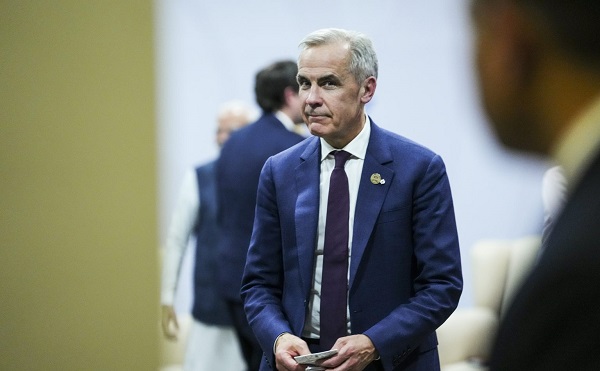
From Resource Works
Once more, we have to shake our collective heads at the (typical) lack of information from the government after the fanfare of announcements, news releases, and video clips.
Prime Minister Mark Carney’s addition of seven new projects to the Major Projects Office (MPO) list of ventures to be accelerated came with a vague promise from the MPO.
Now, said the MPO, it will “work with proponents, provinces, territories and Indigenous Peoples to find the right way forward for these projects.”
The new projects include the Nisga’a Nation’s Ksi Lisims LNG project in BC (and its PRGT pipeline), BC Hydro’s North Coast Transmission Line (NCTL) and the related “Northwest Critical Conservation Corridor,” plus mining projects in Ontario, Quebec and New Brunswick, and an Inuit-owned hydro project near Iqaluit in Nunavut.
In all, a federal news release said, Carney’s announcements “represent more than $56 billion in new investment.” That’s in addition to “$60 billion for investments in nuclear power, LNG, critical minerals, and new trade corridors” that were announced in September.
Carney said: “Unlocking these resources . . . will attract hundreds of billions of dollars in new investment and create thousands of high-paying careers for miners, carpenters, and engineers across the country.”
And it’s all aimed at reducing Canada’s dependence on trade with the U.S. As journalist Thomas Seal of Bloomberg News noted: “The country sells 75% of its goods to the US and projects on the list so far aim to help change that: port developments to ramp up trade with Europe, LNG terminals to sell gas to Asia, and mines to exploit global demand for critical minerals.”
But what does “fast-track” actually mean?
Carney’s Terrace, B.C. announcement raised a so-far unanswered question: What will the addition of these projects to the federal fast-track list mean in practice?
What can, or will, Ottawa actually do to support these projects and help bring them to fruition?
Carney gave no details, but federal officials say the Major Projects Office will coordinate approvals for all components of the projects to accelerate timelines that could otherwise take years.
The MPO is supposed to fast-track resource and infrastructure projects deemed to be “in the national interest.” The new projects have not yet been designated as “in the national interest,” which would qualify them for special treatment in permitting and approvals. Instead, Carney and the MPO used the words “national importance” and “national significance.”
And some of the projects Carney announced are already in progress, and it’s not clear what the MPO could do to move them along.
Does Ottawa plan to give the projects financial support?
The prime minister spoke of Ottawa putting up “huge financing” but, again, gave no further information.
As he listed the additions to the MPO project list, though, the Canada Infrastructure Bank announced a $139.5-million loan to BC Hydro to support “the early works phase” of the NCTL power line.
Does Ottawa see a role for the MPO in negotiating with First Nations and Indigenous peoples that are opposed to one or more of the projects?
PM Carney: “Referring to the MPO, or the Major Projects Office, does not mean the project is approved. It means that all the efforts are being put in place from the federal government in order to create the conditions so it could move forward. But those decisions are taken by many parties, including, very much, First Nations.”
The prime minister’s announcement was the first since the appointment of an Indigenous advisory council that is to help the MPO integrate the United Nations Declaration on the Rights of Indigenous Peoples, UNDRIP, into its decision-making.
Carney added that the “huge financing” he promised is aimed at encouraging Indigenous equity ownership of the projects.
Alex Grzybowski, CEO of the Indigenous organization K’uul Power, sees the North Coast Transmission Line as “a pretty solid investment,” but says First Nations would need to raise $275-$300 million to take equity shares in it.
To help First Nations get there, he calls on Ottawa to provide an investment tax credit, to increase the lending cap of the Canada Infrastructure Bank to $300 million from $100 million, and to provide “a federal loan-guarantee with a provincial backstop.”
Ksi Lisims LNG project
Ksi Lisims LNG is coming from a partnership of the Nisga’a Nation, Rockies LNG Ltd. Partnership and Western LNG.
The $10-billion project in northern BC would have two floating production platforms, producing for export 12 million tonnes of LNG per year. Natural gas for Ksi Lisims would come more than 750 km through the PRGT pipeline.
Ksi Lisims LNG says it hopes for construction to begin this year, with operations to start in late 2028 or 2029. It says it aims to be “net-zero ready” by 2030.
Charles Morven, secretary-treasurer for the Nisga’a Nation, said: “A lot of major work has taken place in the past five years, getting everything put together. This announcement gets us so very close to the finish line.”
And Eva Clayton, Nisga’a president, said: “We’re showing BC, Canada, and the world what Indigenous economic independence and shared prosperity can look like.” She spoke of “meaningful opportunities” for the Nisga’a — and for all Nations and communities in northern BC.
The Nisga’a Nation, a partner in Ksi Lisims LNG and its PRGT pipeline, says it is working with Indigenous communities to strike agreements, including equity stakes in the pipeline. A final investment decision on Ksi Lisims is expected early next year.
Environmental groups have also opposed the Ksi Lisims project, and the Union of BC Indian Chiefs cited environmental and climate concerns. But Carney said Ksi Lisims LNG will be one of the world’s cleanest operations, with emissions 94 per cent below the global average.
And the Nisga’a Nation said: “With our co-developers and Treaty Partners we will ensure this project reflects . . . our high standards of environmental protection.”
The prime minister said Ksi Lisims LNG will add $4 billion a year to the nation’s economy. And federal officials say Ksi Lisims could create thousands of skilled jobs, with Indigenous workers among them.
Said Carney: “LNG is an essential fuel for the energy transition. LNG can help Canada build new trading relationships, especially in fast growing markets in Asia. . . .
“Canada will be ready. We’re home to the world’s fourth largest reserves of natural gas, and we have the potential to supply up to 100 million tons annually of new LNG exports to Asia.”
And his announcement led the Canadian Association of Petroleum Producers to say: “Canada is on a path to become one of the top five LNG exporters in the world.”
North Coast Transmission Line
The 450-km North Coast Transmission Line from Prince George to Terrace would feed clean hydro power to LNG projects such as LNG Canada and the Haisla Nation’s coming Cedar LNG project, and it would also power mining projects and regional communities.
Carney said the power line could eventually connect with Alberta and support reliability, clean power development and new industrial investment across the West. Carney also spoke the potential for a northwest trade and energy corridor running from British Columbia through the Yukon with future possibilities for connection into Alberta. But, again, he gave no details of any plans.
Later, BC Premier David Eby called the NCTL “one of the biggest, most transformational opportunities” in a century. BC says the power line “will be co-owned with First Nations and will provide BC’s 98% renewable energy to the northwest.”
The BC government says the next major steps for the NCTL include finalizing the route. It says construction is expected to start in the summer of 2026, with phased-in completion targeted for 2032-34.
BC legislation would allow First Nations equity in the project and the province also says it plans to direct the B.C. Utilities Commission to allow the project to proceed without needing to go through the usual hearing process, potentially cutting a year to 18 months off the completion date.
To help First Nations acquire equity in the NCTL, Alex Grzybowski, CEO of Indigenous K’uul Power, says three things are needed from government:
“The first and most valuable thing they could do is provide an investment tax credit. And actually that wouldn’t hit their books for six years, so from an immediate financing perspective, that might be the best. . . .
“The next best thing would be to increase the lending cap for the Canada Infrastructure Bank from $100 million to $300 million, and then we would be borrowing money at below Bank of Canada rates, and we would be able to lend that money into construction, which would lower the cost of construction, it would lower the cost for the ratepayers, and it would increase the benefits for the First Nations. . . .
“The third thing they could do is provide a federal loan guarantee with a provincial backstop.”
BC says the NCTL project is expected to create some 9,700 direct full-time jobs, contribute nearly $10 billion per year to GDP and generate approximately $950 million a year in revenues for provincial and municipal governments. BC says it will also help prevent two to three million tonnes of carbon emissions a year.
The NCTL power-line plan also raises key questions, including this: How will BC Hydro come up with the new power to feed into the line? We have seen estimates such as this: “By 2050, BC may need to double or triple its . . . power generation as transportation, buildings and industry are all or partially electrified. Current output is generated with 32 hydro dams. Can the province build another 32 or 64 hydro plants in under 30 years? Of course not, so where will all that power come from?”
And what will NCTL cost? The first estimate from BC Hydro is $6 billion, but Hydro’s costs for the Site C power dam finished up at twice what it initially estimated.
A cautious shift from past policies
Once more, we have to shake our collective heads at the (typical) lack of information from the government after the fanfare of announcements, news releases, and video clips.
We naturally wonder if Ottawa’s promises will be matched by performance, but at least we see some much-needed departure from the anti-project policies of the past Justin Trudeau government.
As CEO François Poirier of TC Energy puts it: “The policy environment is becoming increasingly supportive.”
Heather Exner-Pirot of the Macdonald-Laurier Institute says the new Carney budget shows signs of a better mix of “carrot and stick” than did the Trudeau government. “The last budget was still in the ‘stick’ era. Finally, we’re in a ‘carrot’ era.”
And she adds: “At least under this government, the bad things have stopped happening. And I would say, even with this budget, some of the bad things are actually going away.”
Let us hope so.
Photo credit to the THE CANADIAN PRESS/Sean Kilpatrick.
-
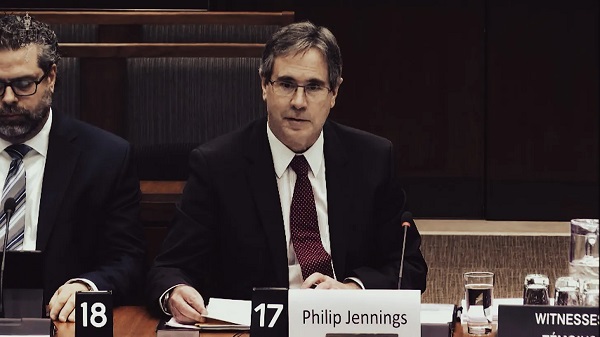
 Business2 days ago
Business2 days agoBlacked-Out Democracy: The Stellantis Deal Ottawa Won’t Show Its Own MPs
-

 Agriculture1 day ago
Agriculture1 day agoHealth Canada pauses plan to sell unlabeled cloned meat
-

 Crime1 day ago
Crime1 day agoB.C.’s First Money-Laundering Sentence in a Decade Exposes Gaps in Global Hub for Chinese Drug Cash
-

 Crime1 day ago
Crime1 day agoFBI Seizes $13-Million Mercedes Unicorn From Ryan Wedding’s Narco Network
-
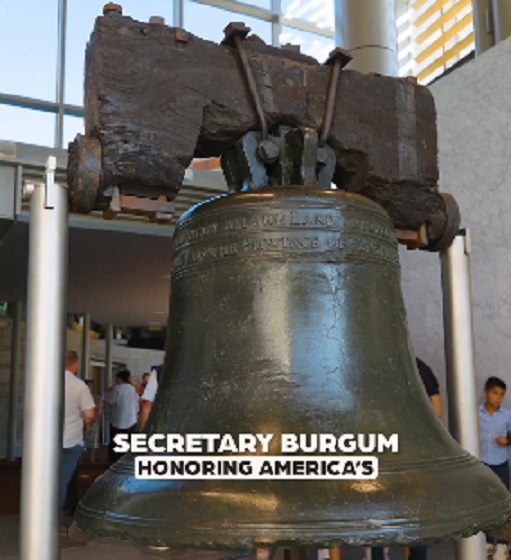
 International1 day ago
International1 day agoAmerica first at the national parks: Trump hits Canadians and other foreign visitors with $100 fee
-

 Banks1 day ago
Banks1 day agoThe Bill Designed to Kill Canada’s Fossil Fuel Sector
-
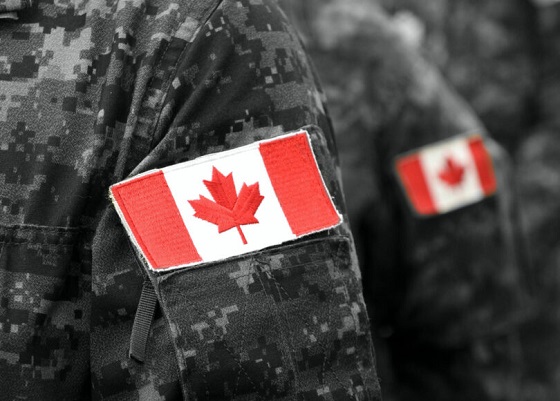
 armed forces1 day ago
armed forces1 day ago2025 Federal Budget: Veterans Are Bleeding for This Budget
-

 Business2 days ago
Business2 days agoFederal major projects list raises questions



